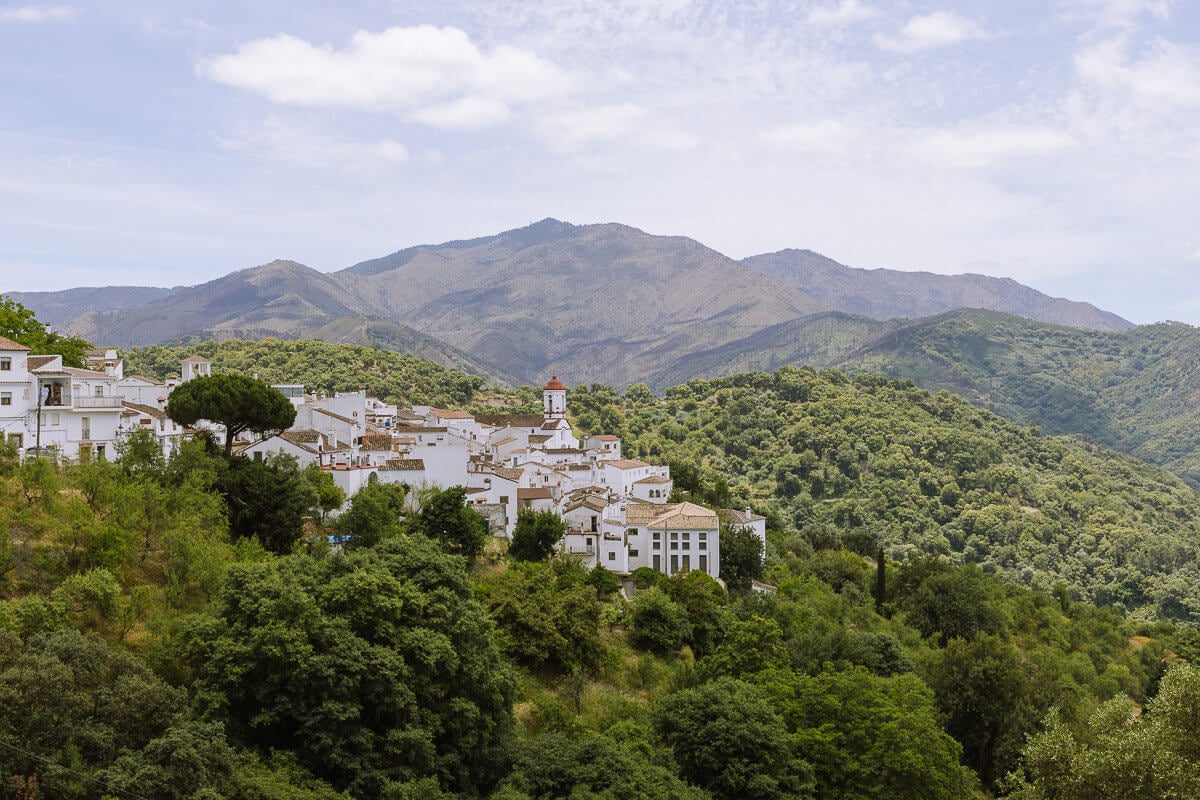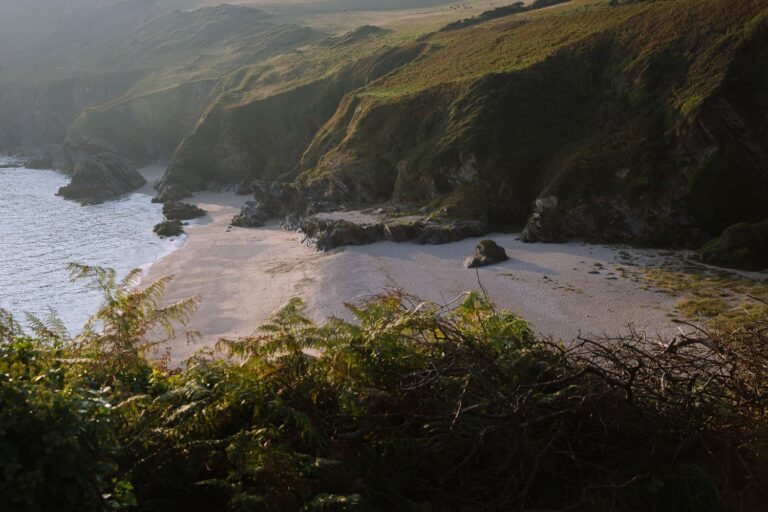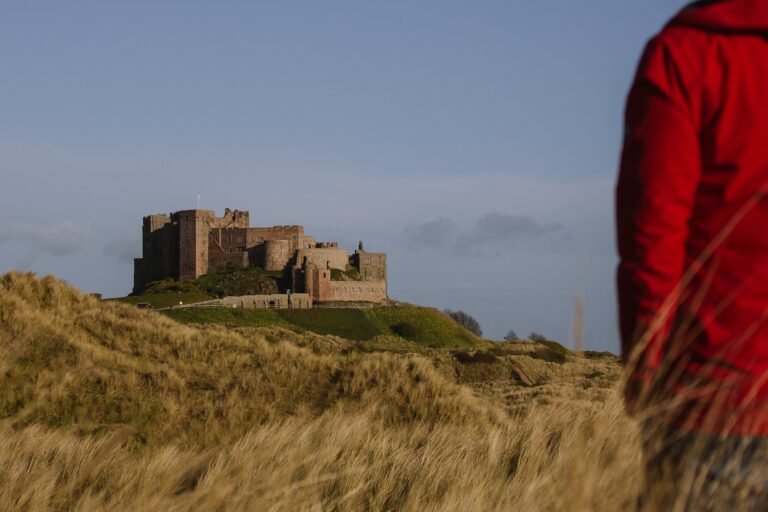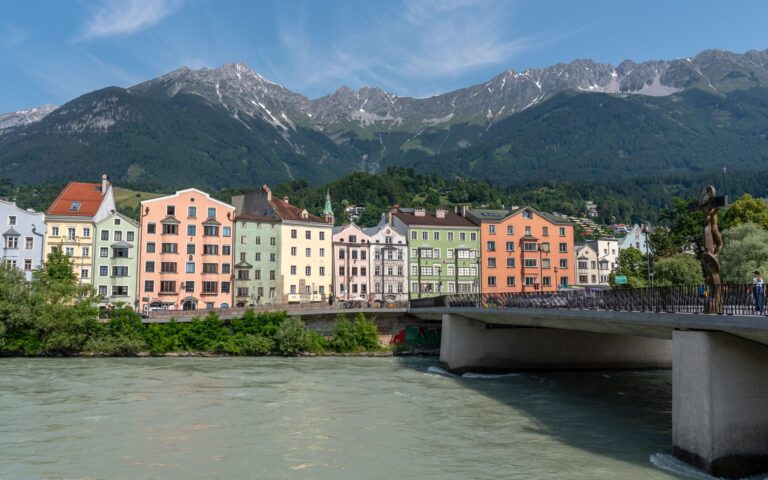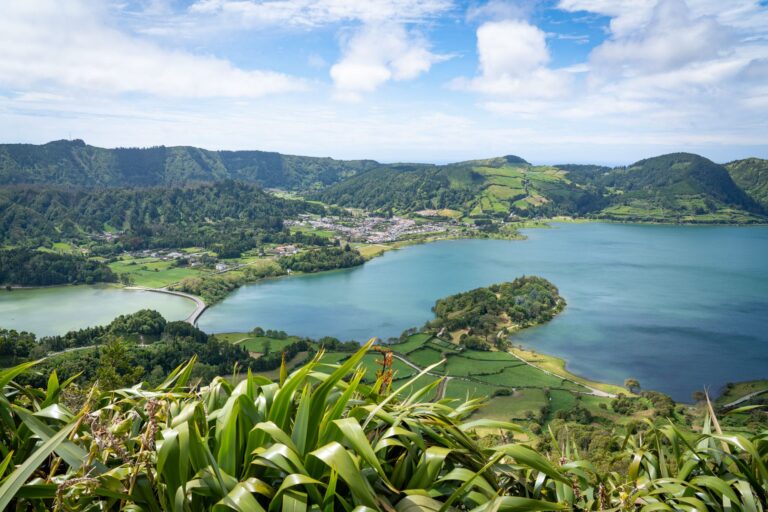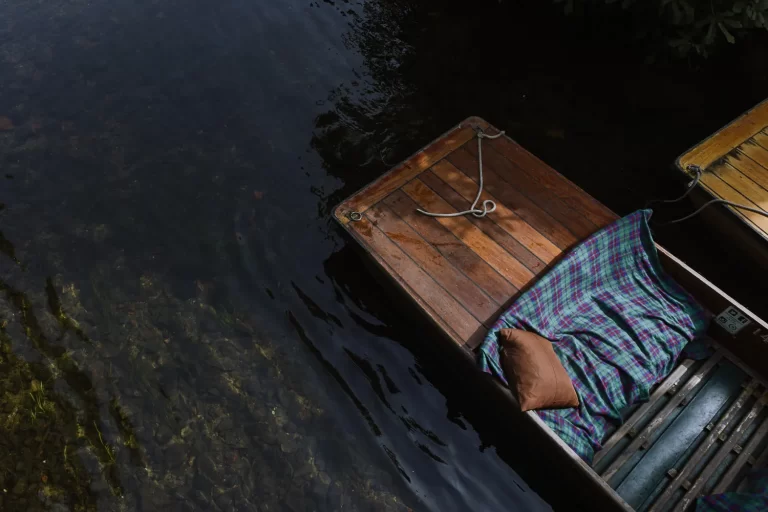10 Beautiful White Villages In Spain + Map & Itinerary | Anywhere We Roam
Nestled in the hills of Andalucía, the White Villages of Spain have a timeless allure, fortified by centuries of history and enriched by a blend of fascinating cultures. Stroll picturesque villages in dramatic tucked-away locations with our guide to the best Pueblos Blancos in Spain.
Perched on mountain peaks in the picturesque region of Andalusia, the White Villages of Spain stand as cultural strongholds in this fascinating part of the country.
Enriched by centuries of Moorish rule and built upon Roman foundations, the villages boast a distinctive charm that remains traditionally Spanish.
Narrow cobbled lanes of whitewashed buildings adorned with orange tiled roofs connect vibrant squares, quaint churches, defensive castles and traditional tapas bars. As the scent of orange wafts in the air, breathtaking views extend across the hilly landscape from once-essential fortifications.
We’ve visited many white villages in Spain. While some have evolved into popular tourist destinations, others remain tranquil hubs where aging residents gather in bustling squares and cozy bars.
Our guide includes both popular white villages with noteworthy attractions, as well as lesser-known local villages where you can get a taste of traditional Spanish life.
Booking your trip via the links on this page (or on our book page) will earn us a small commission, at no extra cost to you. Thanks for your support – Paul & Mark.

IN THIS GUIDE
WHITE VILLAGES OF ANDALUCÍA, SPAIN
WHAT ARE THE WHITE VILLAGES IN SPAIN?
The White Villages of Spain are hilltop villages, often with Moorish roots, found mostly in the Andalucía region of southern Spain.
Their most distinctive feature is a maze of charming, whitewashed buildings with red tiled roofs. Due to their interesting history, they often have defensive Moorish castles, quaint churches, and charming town squares lined with fragrant orange trees.
While some are popular tourist locations, others are traditional Spanish villages with old-school tapas bars, unique characteristics and stunning views.

WHERE ARE THE WHITE VILLAGES?
White villages are found throughout Spain; however, the most popular are in the triangle between Málaga, Cádiz and Seville, in Andalucía in the south of the country.
Under Moorish rule from the 8th to the 15th century, the white villages in Andalucía retain the unique architecture from this period, located on strategic hilltop positions.
This combination of historical influences and their impressive locations gives the white villages in southern Spain their distinctive allure.
RUTA DE LOS PUEBLOS BLANCOS
The Ruta de los Pueblos Blancos or Route of the White Villages is a 200-kilometre route through 19 of the White Villages in Spain. In our opinion, it’s best to pick off a few and explore them properly, but here is the full list.
Arcos de la Frontera
Olvera
Setenil de las Bodegas
Grazalema
Zahara de la Sierra
Bornos
Espera
Villamartín
Algodonales
El Gastor
Torre-Alháquime
Alcalá del Valle
Prado del Rey
El Bosque
Ubrique
Benaocaz
Villaluenga del Rosario
Benamahoma
Algar

HOW TO SEE THE WHITE VILLAGES IN SPAIN?
You can visit two or three of the best white villages on tours from either Málaga and the Costa del Sol, or from Seville.
From Málaga and the Costa del Sol, this well reviewed day trip includes Ronda and Setenil de las Bodegas, two of the most interesting villages in the area.
From Seville, this excellent day trip includes Ronda, Grazalema and Zahara de la Sierra.
To see more than two or three, it’s best to hire a car.

OUR RECOMMENDED WHITE VILLAGES ITINERARY
To see a good selection of the most interesting White Villages in Spain, we recommend hiring a car and exploring the area at your leisure.
The following villages can be visited on a circular driving loop in either 1 busy day or spread over 2 leisurely days.
- Ronda – Although not officially a white village, it’s an unmissable destination in the area.
- Setenil de las Bodegas – A unique white village with the houses built into the cliffs.
- Olvera – A more traditional Spanish village with a picturesque hilltop castle and intriguing cemetery.
- Zahara de la Sierra – The most commanding hilltop views with charming, whitewashed streets.
- Grazalema – Nestled into a dramatic location with a reputation for local crafts.
Following the above itinerary will take you to a great selection of villages with diverse qualities. It also includes the stunning drive over the pass between Zahara and Grazalema, one of the most scenic drives in Andalucía.
While visiting the area don’t miss the amazing Caminito del Rey.


MAP | BEST WHITE VILLAGES IN SPAIN
Our map includes our top 10 white villages in Spain, other interesting things to see in the area and our suggested driving itinerary to see the best of the area.
How to use this map / Click on the top left of the map to display the list of locations, then click on the locations to display further information. Click on the top right corner of the map to open a larger version in a new tab or the star to save to your Google Maps.
1 – RONDA
Ronda is a remarkable town located atop a deep gorge formed by the El Tajo River. The bridge that spans the canyon is an imposing landmark and offers breathtaking views, making Ronda one of the most picturesque White Villages in Spain.
The old town dates to Islamic times, and the influence of its Moorish past can still be seen today. The mosque has been transformed into a church, the Moorish palace into a mansion, and the Arab baths are now in ruins in the shadows of the gorge.
Ronda is famous for being the home of bullfighting in Spain, and it has one of the finest bullrings in the country, the Plaza de Toros. If you only visit one white village in Andalucía, make it this one.


WHAT TO DO IN RONDA
- Take in the Nuevo Bridge from the road at the top or by climbing down to the base of the gorge.
- Visit Casa de San Juan de Bosco, a 20th-century palace with Nasrid details and a garden overlooking the Tajo gorge.
- Explore the historic Palacio de Mondragón, a 14th-century Moorish house.
- Stroll through the stunning gardens of Casa del Rey Moro, an 18th-century mansion built on the site of an original Moorish house.
- Wander through the hanging gardens of Jardines de Cuenca, which are spread over 23 rose-covered terraces.
TIPS FOR VISITING RONDA
How to get there – Ronda is a 1 hour 20-minute drive from Málaga, or 1 hour 45 minutes from Seville or Cádiz.
Parking at Ronda – The car park at Plaza de la Merced is close to all the main attractions and the spaces are a tiny bit wider than some of the other car parks.
Tour from Málaga – This well-rated tour from Málaga visits two very different white villages – Tour of Ronda & Setenil de las Bodegas.
Tour from Seville – The well-rated tour from Seville visits Ronda and two other excellent pueblos blancos.



2 – GRAZALEMA
Grazalema is one of our favourite pueblos blancos in Spain thanks to its enviable location on a rocky ledge deep within the Sierra de Grazalema Natural Park.
Surrounded by towering craggy mountains, rows of white houses topped with terracotta tiles create one of the most photographic locations in the area.
As a popular white village on the tourist trail, Grazalema can get busy during the day and sleepy in the late afternoon when the buses depart and most of the cafes close. Nonetheless, its central position on the Ruta de Pueblos Blancos makes it worth popping into.


WHAT TO DO IN GRAZALEMA
- Have a coffee in the main square under the gaze of the surrounding mountains.
- Hike in the nearby Sierra de Grazalema Natural Park – the El Torreon hike is one of our favourites.
- Try one of the very local tapas restaurants tucked into the lanes behind the main square.
- Complete the Llano del Endrinal circular hike from the car park (2 hours | 2.2 kilometres)
TIPS FOR VISITING GRAZALEMA
How to get to there – Grazalema is a 1-hour 50-minute drive from Seville, Málaga & Cádiz.
Parking at Grazalema — Park at Mirador el Tajo and it’s only a very short walk to the main square.
Tour from Seville – Visit Ronda, Grazalema, and Zahara de la Sierra on this White Villages tour from Seville.



3 – ZAHARA DE LA SIERRA
Perched on the side of a hill in the northern part of the Sierra de Grazalema Natural Park, Zahara de la Sierra is a postcard-ready white village with magnificent views, interesting history, and charming dining options.
The town is overlooked by a 13th-century Moorish castle on a rocky promontory. For 150 years, Muslims occupied the area, selecting Zahara for their castle thanks to its commanding view of the surrounding countryside.


WHAT TO DO IN ZAHARA
- Climb the steps to the 13th-century castle and take in the panoramic views overlooking the surrounding countryside.
- Admire Santa Maria de la Mesa church with its colourful spire and dome.
- Photograph the picturesque Capilla de San Juan de Letrán chapel built in 1958 on the site of an old hermatige.
- Eat tapas on the street: El Gallo or La Cabana Terraza are two great options.
- Hike deep in the dramatic gorge of Gargante Verde.
TIPS FOR VISITING ZAHARA
How to get there — It’s a 1-hour 30-minute drive from Seville or Cadiz, and 2 hours from Málaga
Parking at Zahara de la Sierra — There is a car park on Calle Nueva as it enters the town from the south. Alternatively, you may be able to park along the main road (CA9104) as it skirts the northern edge of the town.
Tour from Seville – Visit Ronda, Grazalema, and Zahara de la Sierra on this White Villages tour from Seville.



4 – SETENIL DE LAS BODEGAS
Setenil de las Bodegas is a unique village located in the province of Cadiz, in the southern region of Andalusia, Spain.
The village lies along the gorge of Trejo River and the walls of this gorge contain many natural caves.
Over the years, white facades were built over the cave entrances to create homes. Cheap to build and cool in summer, the narrow streets of the village are now adorned with buildings integrated into the natural landscape.
In addition to its distinctive architecture, Setenil de las Bodegas has a rich history dating back to prehistoric times. The village was an important strategic location during the Muslim occupation of Spain, and the name comes from the Latin words ‘septem nihil’ referring to the seven times the Catholic monarchs tried to recapture the town from the Moors.

WHAT TO DO IN SETENIL DE LAS BODEGAS
- Wander around the houses built into the rock admiring the unique architecture.
- Walk up to the Arab Castle (Nazari Castle) for stunning views over the town.
- Explore one of the many viewpoints – Calle Ventosilla Alta is the highest viewpoint in town; Mirador del Lizon is an observation deck open 24 hours.
TIPS FOR VISITING SETENIL
How to get to Setenil de las Bodegas – It’s a 1 hour 20-minute drive from Málaga, 1 hour 35 minutes from Cádiz, 1 hour 50 minutes from Seville.
Parking at Setenil de las Bodegas — There are a few spaces on the main road as it winds around the village, otherwise there is easy underground in Parking Los Canos.
Tour from Málaga – This well-rated tour from Málaga visits Ronda and Setenil de las Bodegas.



5 – OLVERA
Olvera is a charming town surrounded by olive groves and rolling hills. Its hilltop location offers breath-taking views of the surrounding landscape, and its whitewashed buildings and narrow streets make it a classic example of a traditional White Village in Spain.
The most striking image in Olvera is the church and reconstructed 12th century castle that dominates the top of the hill.
Less popular with tourists, Olvera is a quiet place to enjoy a glass of local Vermut, sample traditional tapas and stroll the charming quiet streets.

WHAT TO DO IN OLVERA
- Walk up to Monumento al Sagrada Corazon, a viewpoint above a lovely rock garden with the scent of Jasmine wafting in the air.
- Climb the stairs up to El Castillo Arabe de Olvera for wonderful views over the church, the town and the surrounding olive groves. Entrance is €2.
- Stroll the beautiful cemetery with grand white marble graves set into the walls under the castle.
- Admire the church from the terrace (there’s no need to go in), and the views up to the castle.
TIPS FOR VISITING OLVERA
How to get to there – Olvera is a1-hour and 30-minute drive from each of Seville, Cádiz and Málaga.
Parking at Olvera — The most convenient parking is towards the castle on Calle Bellavista on the northern edge of town.



6 – ARCOS DE LA FRONTERA
Arcos de la Frontera is a charming village in Andalucia, situated on a towering sandstone cliff surrounded by the Guadalete river. Viewed from below the tiny houses seem to only just peer above the vertical rocky wall.
The village has a rich history as a frontier for warring Christians and Muslims, resulting in a unique blend of architecture. The narrow lanes of Arcos de la Frontera are lined with few shops and cafes, adding to its quaint and peaceful atmosphere.


WHAT TO DO IN ARCOS DE LA FRONTERA
- Stroll Cabildo Square which houses a 15th-century church built over the remains of a Moorish fortress.
- Catch a snap of the colourful Town Hall, a beautiful building in the main square.
- Head out to the Guadalete River for the best view of Arcos de la Frontera peeking over the vertical cliff wall.
TIPS FOR VISITING ARCOS
How to get there –Arcos is a40-minute drive from Cadiz, 1 hour 20 minutes fromSeville, or 1 hour 40 minutes from Málaga.
Parking at Arcos de la Frontera – Park at Calle de Muñoz Vázquez, which has entrances off Plaza de España and Avenida del Duque de Arcos.


7 – CASARES
Casares is a stunning white village set amidst the Andalusian hills which has been declared a historic artistic site due to its well-preserved architecture and cultural heritage.
A mirador on the road at the top of the town offers a breathtaking panorama. From the viewpoint, it’s a steep walk down to the town with tight laneways not suitable for tourist buses. As a result, Casares remains quiet and local, despite the beautiful setting.
The town is centred around Plaza de España, where you can enjoy tapas surrounded by friendly locals.

WHAT TO DO IN CASARES
- Visit the 13th-century ruined Castillo and walls for stunning views of the coast all the way to Gibraltar and beyond.
- Take a walk through the interesting cemetery with its unique tombs laid into the marble walls.
- Admire the up to 2.8 metre wingspan of the gigantic Griffon vultures which can often be seen circling above the cliffs.
TIPS FOR VISITING CASARES
How to get there – Casares is a 1-hour 20-minute drive from Málaga, 1 hour 40 minutes from Cadiz, or 2 hours 40 minutes from Seville.
Parking at Casares – Parking is around the mirador on the MA8300 as it winds above the village. It’s a 5-minute steep walk down to the village and 5 minutes back up to the castle.




8 – GAUCÍN
Gaucín has become a haunt for foodies and artists.
Located in the mountains of the Serranía de Ronda, the pueblo blanco consists of narrow medieval streets filled with tall houses sprawled over two hills. Village life revolves around Plaza de Santo Niño, and the whole scene is overlooked by the Sierra del Hacho Mountain.
Dotted throughout the town are tiny galleries, several high-quality restaurants, as well as plenty of traditional tapas bars. It makes a great spot for lunch. On clear days views stretch towards Gibraltar & Morocco.

WHAT TO DO IN GAUCÍN
- Visit the Castle of Aguila for its stunning views and fascinating history.
- Wander the narrow streets of the village and admire the traditional Andalusian architecture and colourful flowers.
- Eat at Azulete Restaurant for their excellent Mediterranean dishes. Book their outdoor terrace for the best seat in Gaucín.
TIPS FOR VISITING GAUCÍN
How to get to Gaucín –It’s a 1 hour 35-minute drive from Málaga, 2 hours from Cadiz, or 2 hours 40 minutes from Seville.
Parking at Gaucín – Parking is on Calle Convento as you enter the town on the eastern side.



9 – JÚZCAR
In the spring of 2011, the once-white village of Juzcar was painted blue to celebrate the worldwide premiere of the Smurf movie.
The original plan was to paint the village white again after the premiere ended. However, the blue village had become a sensation, and an estimated 95,000 people had visited over the course of six months. The locals saw an opportunity and decided to leave the town blue.
Despite its gimmicky origins, Juzcar is actually a fun place to visit, set in a beautiful location. The town is dotted with large statues of Smurfs and colourful red mushrooms, while murals and cartoons cover the walls. Even the road signs are cute.

WHAT TO DO IN JÚZCAR
- Take a stroll around the town to admire the blue-painted buildings and the Smurf-themed decorations.
- Visit the Smurf Museum to learn about the history of the Smurfs and how the town became associated with them.
- Explore the surrounding countryside by going quad biking, hiking, or mountain biking.
TIPS FOR VISITING JÚZCAR
How to get there – Juzcar is a 1 hour 45-minute drive from Málaga, 2 hour 15 miutes from Cadiz and Seville
Parking at Juzcar – Parking is on the side of the road on Camino De Pujerra at the southern edge of the town.



10 – MIJAS
Thanks to its elevated position, Mijas is a picturesque town comprised of traditional whitewashed streets, leading to a cliff-edge viewpoint with unparalleled views of the Mediterranean.
A thriving leather industry, an abundance of charming cafes and craft shops, plus a myriad of small tourist attractions continue to entice busloads of visitors.
Situated between the bustling tourist hotspots of Málaga and Marbella, Mijas can get very busy. Often painfully so. To avoid the crowds, it’s best to arrive early in the morning when you can stroll the charming streets while they’re still waking up.


WHAT TO DO IN MIJAS
- Visit the church of Virgen de la Peña carved into the cliffside with prime Mediterranean views.
- Take a relaxing stroll through Parque La Muralla, an ornate garden located on the cliff edge.
- Experience the history and culture of Spanish bullfighting by visiting Plaza de Toros, dating back to the early 20th century.
- Savour the local cuisine by trying a traditional stew and sweet pastry.
TIPS FOR VISITING MIJAS
How to get to Mijas – Mijas is a 30-minute drive from Málaga, 2 hours 10 minutes from Cadiz, 2 hours 40 minutes from Seville.
Parking at Mijas – There is limited parking on the streets and a large (pretty cheap) multi-story pay and display that drops down just below the town.
Tour from Málaga – This tour from Málaga visit Mijas as well as Puerto Banus and Marbella.



WHERE TO STAY TO VISIT THE WHITE VILLAGES
We recommend staying in Ronda which has great options for backpacking in Spain, or indulging in a local atmospheric hotel. It’s a fantastic destination with impressive views, interesting history, and the pick of the food options in the area.
OTHER PLACES TO VISIT NEARBY
The White Villages in southern Spain are located in a beautiful and culturally interesting part of the country. Here are some other places to visit in the area.
Caminito del Rey // The Caminito del Rey is a 7-kilometre hike through a stunning gorge, suspended on an aerial path, 100 metres above the ground. The mostly flat trail can be completed by anyone with a reasonable level of fitness. All the details are on our guide to the Caminito del Rey walk.
Córdoba // Córdoba was the capital of the only caliphate in Western Europe and today it’s a fascinating city to visit. The Mezquita-Catedral with a mix of Muslim and Christian influences is one of the most important buildings in the world. Read more in our guide to visiting Córdoba.

Granada // Granada is a historic town at the foothills of the Sierra Nevada mountains, around 1.5 hours’ drive from Málaga. As an important centre during the Moorish occupation of Spain, Granada is known for the sprawling hilltop fortress, Alhambra. Read our guide to visiting Granada for all the details.
Málaga // Recently reinvented with fresh urban spaces, Málaga has emerged from its reputation as a mere jumping-off point for some of Spain’s best beaches, to become a cultural destination in its own right. Read more in our Málaga guide.
Cádiz // Cádiz is an ancient town by the sea with wide boulevards flanked by imposing terrace houses. There’s a relaxed charm, a sense of worn grandeur, Roman history and excellent local tapas bars. See our guide to Cádiz for more information.


Seville // Seville is the capital of the Andalusian region with world-class art, iconic attractions and some of the best food in the region. Read more in our guide to the best things to do in Seville and our 3-day Itinerary for Seville.
Tarifa // Tarifa is a popular surfing destination on the southern tip of Spain where the Atlantic meets the Mediterranean. The town has a north African feel with small, whitewashed laneways hiding some excellent restaurants. Read our guide to the best beaches in Tarifa.

THANKS FOR VISITING // WHERE NEXT?
A BIG THANK YOU
We’ve been providing free travel content on Anywhere We Roam since 2017. If you appreciate what we do, here are some ways you can support us.
Thank you!
Paul & Mark
FOLLOW US ON INSTAGRAM
USE OUR RESOURCES PAGE

